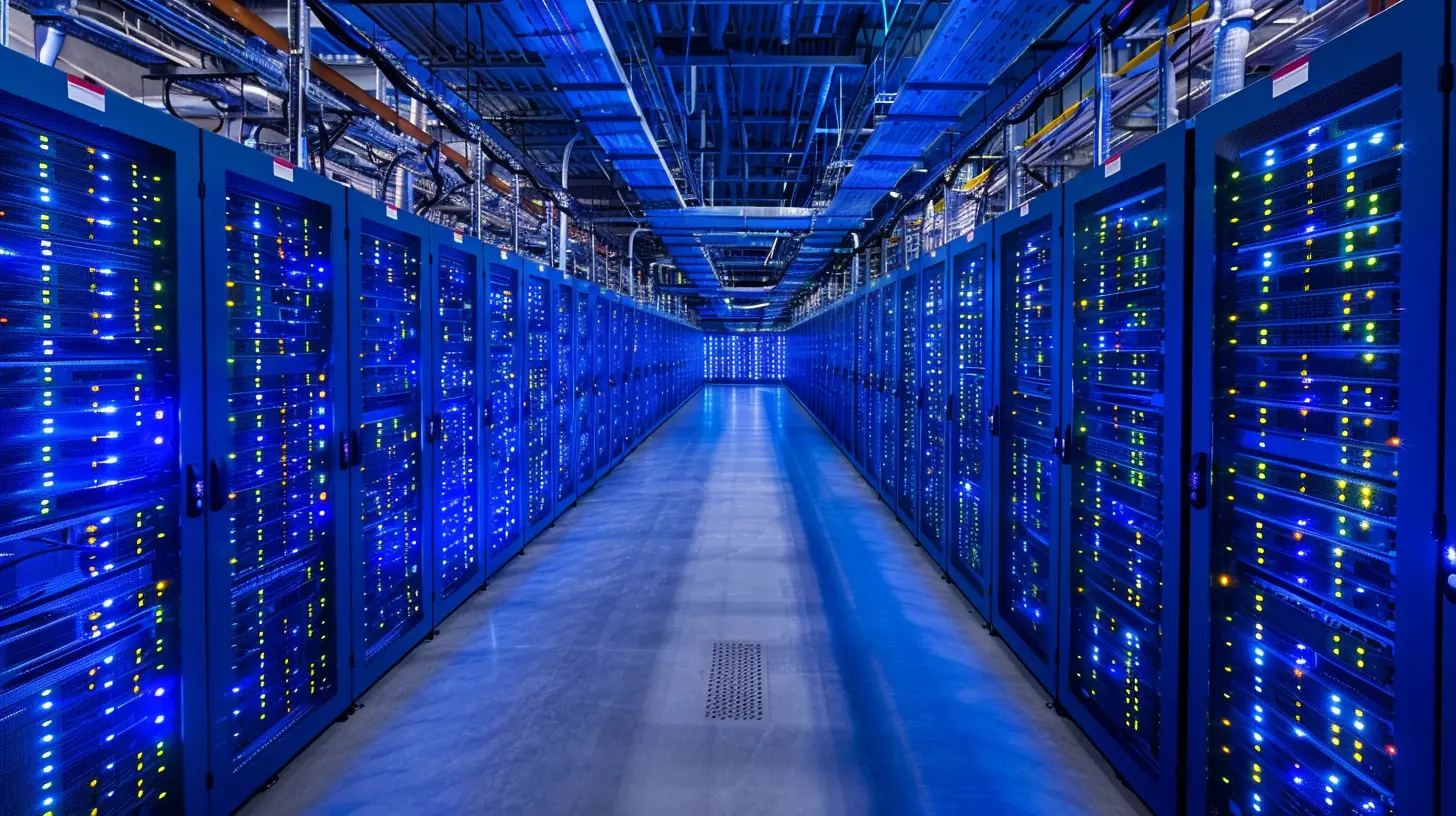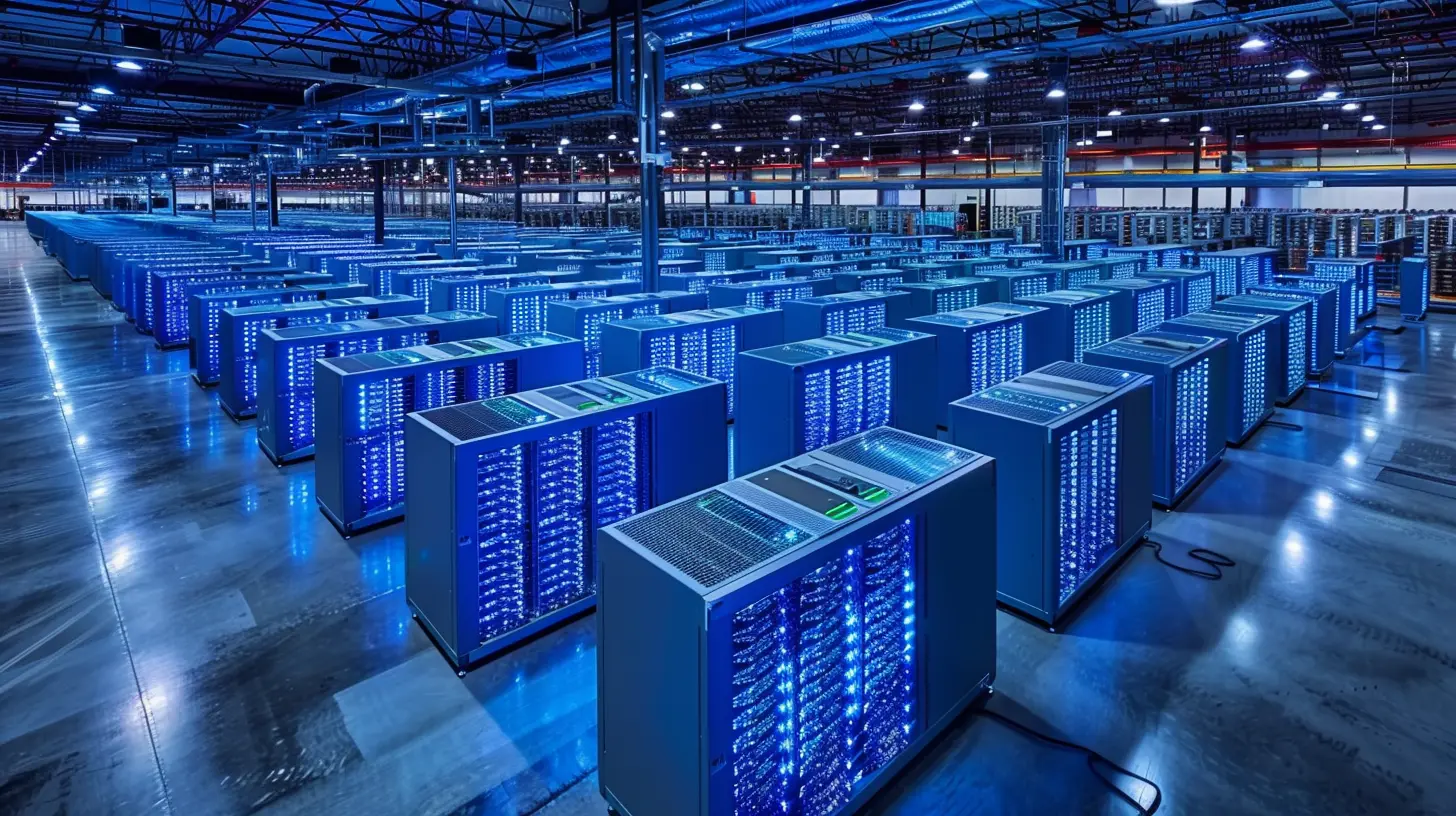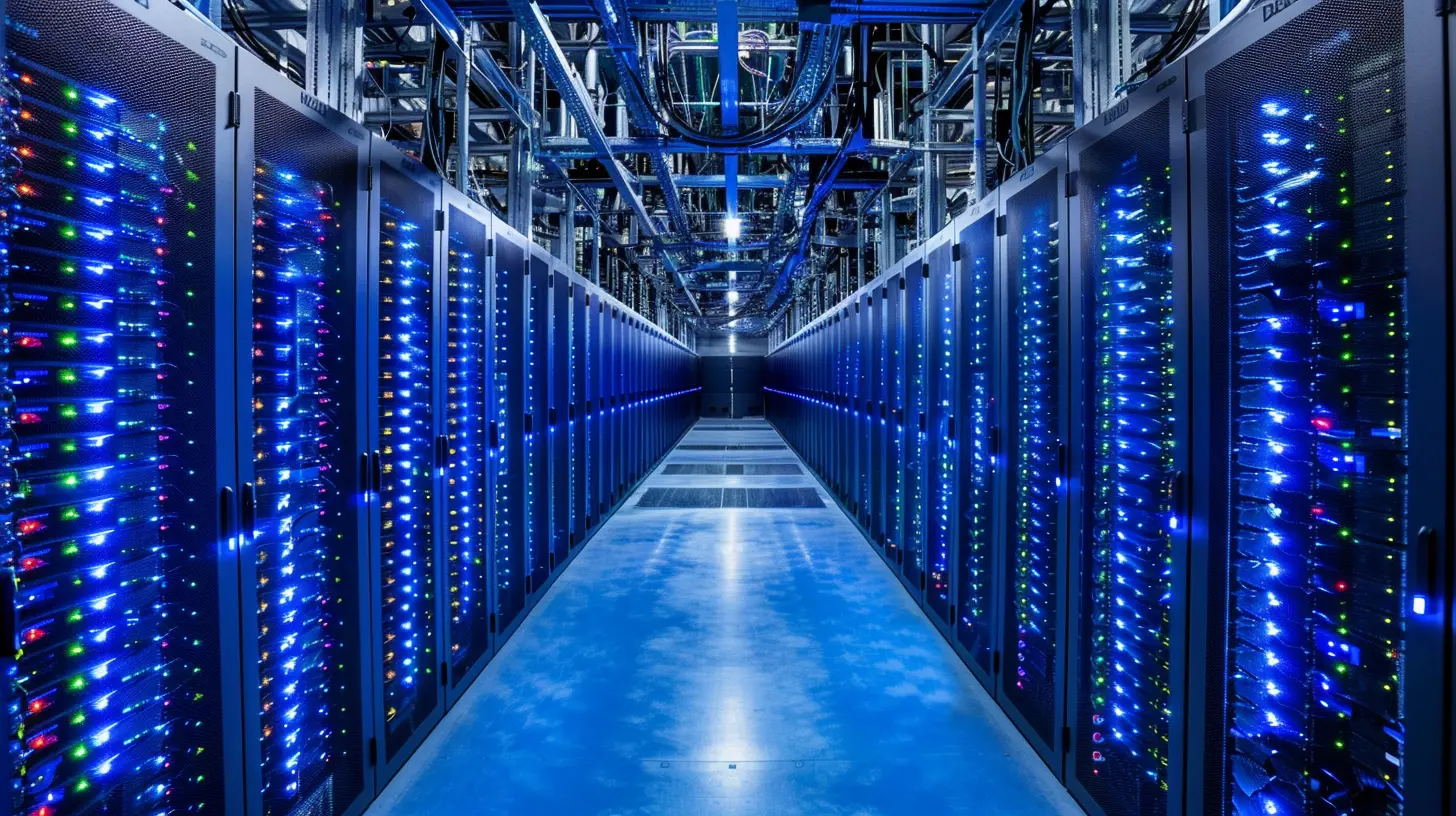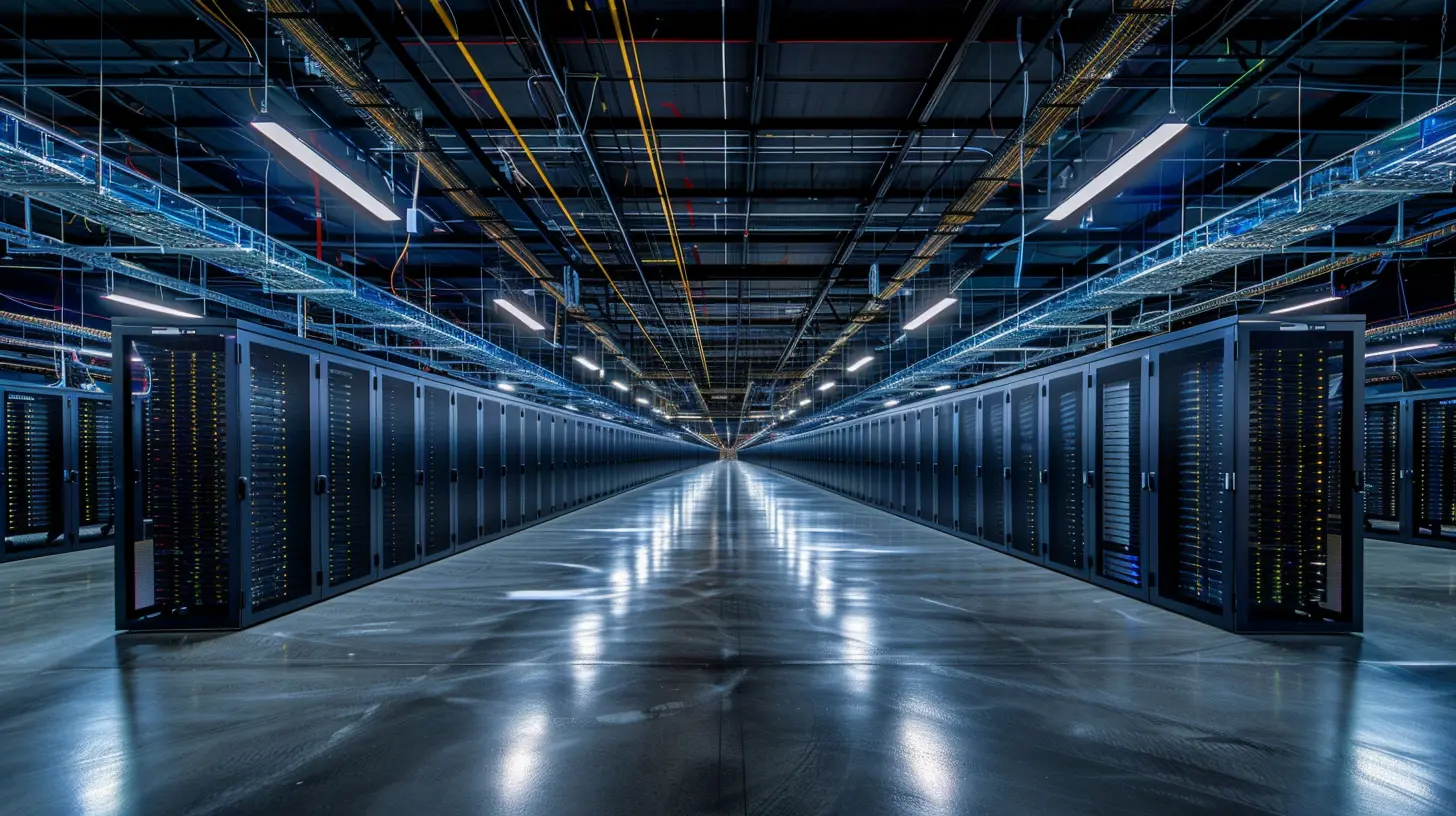The Role of Hyperscale Data Centers in the Cloud Revolution
10 August 2025
Let’s talk about something massive—literally and digitally. Hyperscale data centers. You’ve probably seen the phrase thrown around in tech blogs and cloud computing articles, but what exactly are they, and why is everyone raving about their role in the "cloud revolution"?
Well, buckle up, because we're about to dive deep into this fascinating world where hardware meets high-speed internet, and scale meets sky-high demand.
What Even Is a Hyperscale Data Center?
Alright, let’s simplify this.Imagine your laptop or PC. Now imagine a room filled with devices like that. Now multiply that room by, oh, a few hundred football fields. Welcome to the realm of hyperscale data centers.
These are giant facilities packed with thousands upon thousands of servers, all humming quietly (well, sort of) and working tirelessly to deliver cloud services—everything from streaming videos to running enterprise-level apps, managing databases, and yes, even handling your smart home tech.
Hyperscale isn’t just about size, though. It’s about agility, efficiency, and scalability. These centers are purpose-built to scale up fast—like adding thousands of servers almost on demand without blinking an eye. Think of it like a never-ending game of Tetris, with more pieces ready as you need them.
Why the Buzz Around Cloud Computing?
Before we dive deeper, let’s quickly rewind and look at cloud computing.Cloud computing is basically the delivery of computing services—like storage, processing, and networking—over the internet. Instead of having all your data on one device or a local server, you access it from anywhere, anytime.
And this shift? It’s massive. Businesses are moving away from owning bulky server rooms to paying for cloud services like AWS, Microsoft Azure, or Google Cloud. It’s like ditching the DVD shelf for Netflix. More space, better access, and constant updates.
But here’s the catch—you need somewhere for all those files, apps, and services to live. And here’s where hyperscale data centers step into the spotlight.
Hyperscale Data Centers: The Cloud’s Mega-Engine Room
So how do hyperscale data centers fuel this cloud revolution?They are the literal backbone of cloud computing. Without them, there is no "cloud." These centers house the infrastructure that cloud providers use to deliver their services. When you hit "send" on an email, backup your photos, or deploy an app on AWS, a hyperscale facility is making that happen.
Scale Like No Other
These aren’t your average data centers. Hyperscale data centers are built to support tens of thousands of servers and petabytes of storage. We're talking about facilities that require their own power grids. Some even build their own renewable energy sources to power the beast.Google, Amazon, Microsoft—all the cloud giants—own hyperscale facilities across the globe. This sprawling network ensures that users get fast, reliable cloud access, no matter where they are.
Elasticity at Its Finest
Need more storage? More compute power? With hyperscale, it’s just a few clicks away. It’s like ordering more pizza slices when the party's still going strong. You don't need to rebuild your kitchen (or server network), the infrastructure simply stretches to fill the demand.This level of scalability is what makes cloud services so attractive to startups and enterprises alike.
Inside the Beast: How Hyperscale Data Centers Work
There’s a lot going on beneath those sleek glass exteriors (or sometimes, very unassuming warehouses).Unique Architecture
Hyperscale centers aren’t just bigger; they’re different. They often feature:- Custom server designs: Most cloud providers don’t buy servers off-the-shelf. They design their own to be ultra-efficient and purpose-built.
- Modular infrastructure: Components can be swapped in and out like Lego blocks.
- High-performance networking: These centers aren't just data lockers; they're data highways.
Automation and AI Everywhere
Manually managing a hyperscale data center? Nope. These facilities run with automated monitoring systems, AI-based cooling controls, predictive maintenance, and machine learning-powered energy efficiency.Imagine having a digital janitor, technician, and security guard all rolled into one smart system.
The Environmental Question: Are Hyperscale Data Centers Eco-Friendly?
Let’s get real—housing millions of servers uses a TON of power. And yes, environmentally speaking, this raised alarms. But here’s the good news: hyperscale providers are investing heavily in sustainability.Green Cloud in the Making
Tech giants now power many of their data centers with renewable energy. Google, for instance, has been carbon-neutral for years and aims to run entirely on carbon-free energy by 2030. Amazon and Microsoft have their own green goals, investing in solar farms, wind energy, and carbon offsetting programs.Also, hyperscale centers are more efficient than your typical data center. Why? Because their size lets them optimize cooling, layout, and power usage like pros. Some use AI to predict optimal temperatures, or even locate facilities in naturally colder climates to cut down AC costs.
The Business Impact: Why Enterprises Love Hyperscale
From small startups to Fortune 500s, everyone’s riding the cloud wave—and hyperscale data centers are the surfboard.Cost-Effective and Scalable
No more buying expensive servers that’ll be outdated in two years. With hyperscale-powered cloud services, you pay for what you use. Need to scale suddenly because your app went viral overnight? Done. No downtime. No sweat.Global Reach
Got customers in Tokyo, Berlin, and Chicago? Hyperscale centers make it easy to offer consistent, fast access across continents. They’re interconnected, redundant, and packed with fail-safes. That means your website or app stays up, even if an entire region goes down.Security on Steroids
These centers are Fort Knox-level secure—physically and digitally. There are biometric scanners, AI-based surveillance, and military-grade fire suppression systems. And data? Encrypted and monitored 24/7.Challenges Hyperscale Data Centers Face
Now, not everything is sunshine and terabytes. Running a hyperscale facility is no cakewalk.Massive Energy Needs
Despite the shift toward renewables, energy demands remain huge. Keeping servers running and cool requires continuous power, and grid dependencies can be a bottleneck.Data Sovereignty and Legal Issues
Where data is stored matters. Countries have rules about how data can cross borders. Hyperscale providers must navigate a complex web of international law to keep everyone compliant.Hardware Lifespan and E-Waste
Servers aren’t immortal. They burn out, become obsolete, or just… age. Managing hardware refresh cycles sustainably is a key concern for these mega-centers.What’s Next? The Future of Hyperscale in the Cloud Space
Here’s where it gets juicy. Hyperscale data centers aren’t slowing down. In fact, they’re evolving.Edge Computing Integration
Instead of doing all the computing in a centralized center, more processing is happening closer to your device—called edge computing. Hyperscale centers are adapting by creating mini data hubs closer to population centers, cutting latency and boosting speed.AI and Machine Learning Acceleration
With the rise of AI tools, the demand for high-performance computation is going through the roof. Hyperscale centers are now housing specialized chips like GPUs and TPUs to cater to this new need.Quantum Computing? Maybe...
It’s still early days, but when quantum computers become scalable, hyperscale facilities will likely be the first to house them. Think of it as the hyperspace jump for computing power.Real-Life Examples: Hyperscale in Action
Let’s connect the dots with some real-world use cases.- Netflix: When you binge-watch a series, hyperscale centers stream that content from the cloud with near-zero buffering.
- Amazon (the store AND AWS): Every product you browse, recommendation you get, or transaction you make runs through hyperscale infrastructure.
- Zoom: During the pandemic, Zoom handled a massive traffic surge—all thanks to hyperscale capacity that scaled at lightning speed.
Final Thoughts: Hyperscale is the Unsung Hero of the Cloud Era
We talk a lot about cloud services, but behind the scenes are these futuristic, buzzing, server-packed mega-structures—hyperscale data centers—that make it all possible.They’re not just server farms; they’re the digital equivalent of the power plants that light up our online world. And as our lives become more cloud-dependent, their role will only grow more critical. So next time you fire up Netflix, upload to Google Drive, or cruise through social media… give a tiny nod to the hyperscale backend doing the heavy lifting.
all images in this post were generated using AI tools
Category:
Data CentersAuthor:

Reese McQuillan
Discussion
rate this article
1 comments
Makayla Franco
Beyond the cloud's horizon.
August 22, 2025 at 2:18 AM

Reese McQuillan
Thank you! The phrase captures the limitless potential of hyperscale data centers in shaping the future of cloud technology.


